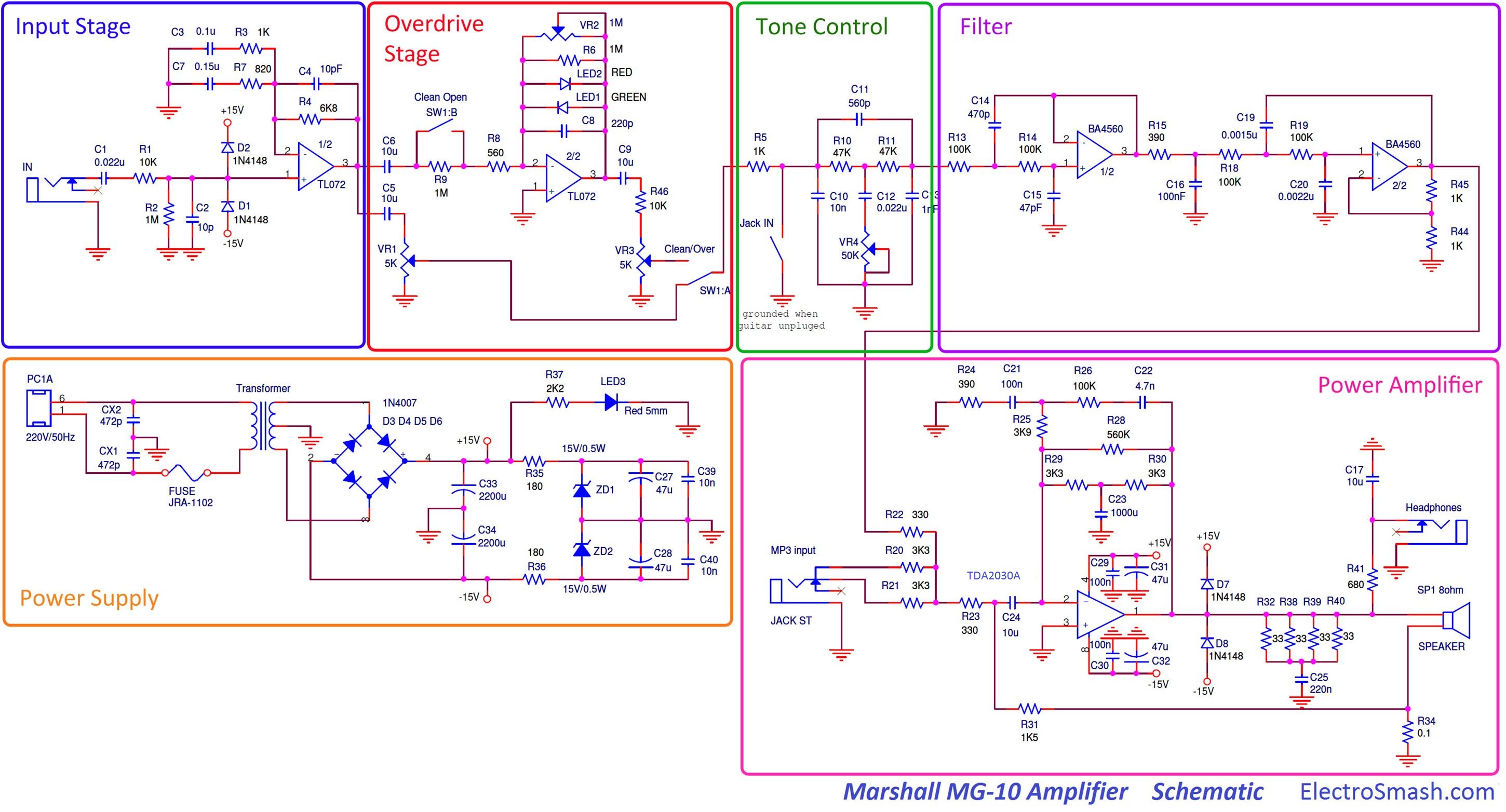In case anyone wants to tinker with a simulation of the circuit, here's a link for an online app (http://www.falstad.com)
Preamp section frequency response (no option for adding clipping diodes, or log type pots):
https://tinyurl.com/ybvl5aod
Power amp section (no idea how to include the speaker (inductor?) in the current feedback loop. I just used an 8 Ohm resistor.)
BTW, the spec sheet says typical gain of around 26, but this seems to have way more. Anyway, I don't understand a lot of what they did there and haven't found any other examples of using this power amp in inverting config.
https://tinyurl.com/ycu5denz
You need to have the Java plugin active in your browser.
Some screenshots below.
Preamp section frequency response (no option for adding clipping diodes, or log type pots):
https://tinyurl.com/ybvl5aod
Power amp section (no idea how to include the speaker (inductor?) in the current feedback loop. I just used an 8 Ohm resistor.)
BTW, the spec sheet says typical gain of around 26, but this seems to have way more. Anyway, I don't understand a lot of what they did there and haven't found any other examples of using this power amp in inverting config.
https://tinyurl.com/ycu5denz
You need to have the Java plugin active in your browser.
Some screenshots below.







